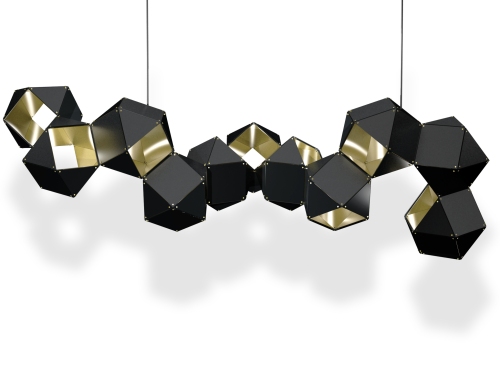ICFF 2013: The Welles by Gabriel Scott
by Gabriel Sistare
 I never took Chemistry, either in high school or college. Peripheral to the pursuit, I’ve heard too many stories from friends who were elated to receive near-failing grades. They observed this close-escape-from-execution academia as standard–the volatility of chemistry excusing the inconsistency of a student’s marks. But with most physical sciences and mathematics, keeping a manageable distance as an admirer, I’m interested in their aesthetic potential. The attempt to simulate abstraction, between galactic distance and clouds of electrons, leads to beautiful art created under pressure to comprehend.
I never took Chemistry, either in high school or college. Peripheral to the pursuit, I’ve heard too many stories from friends who were elated to receive near-failing grades. They observed this close-escape-from-execution academia as standard–the volatility of chemistry excusing the inconsistency of a student’s marks. But with most physical sciences and mathematics, keeping a manageable distance as an admirer, I’m interested in their aesthetic potential. The attempt to simulate abstraction, between galactic distance and clouds of electrons, leads to beautiful art created under pressure to comprehend.
The Welles, by Gabriel Scott, debuted this year at ICFF, resembles the classic chemical bonding models we’re all familiar with displayed on the cold slate desks in our science classrooms. Polyhedra of blackened steel with interiors of brass, copper, or nickel are connected like molecules. Available as the Single, Cluster, 3-Spoke, 5-Spoke, Central, and Long, the variations of The Welles seem to directly reference the constructions of Chemistry that were unattainable to me once but now compel me to understand them. The terror of academic science is soothed through The Welles. 
These chemical models may not be technically accurate, like Niels Bohr’s atom. But the attempt to visualize an abstraction, like the chandelier Copernico did with the ellipses of the solar system, is perhaps more important than how realistic the visualization is. That is the value of The Welles: it succeeds in its attempt to show us what we cannot see.

